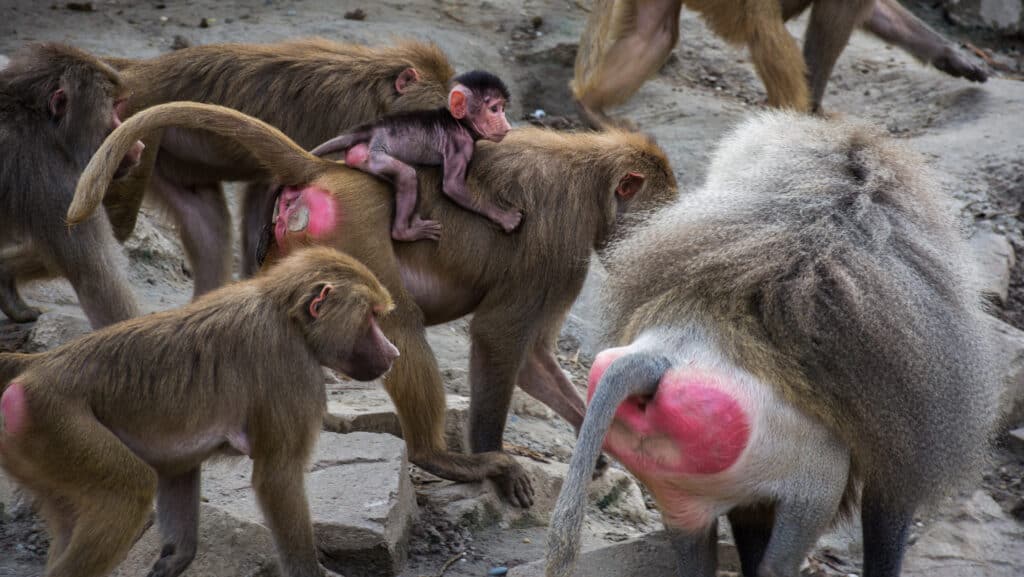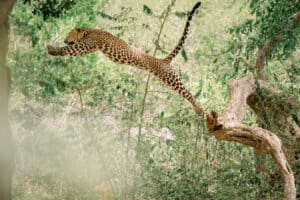Baboons are distinguished by their big heads and muzzle reminiscent of a dog’s. They are not solitary and instead prefer to live in large groups. But what is a group of baboons called? Let’s find out!
What is a Baboon?
Baboons are monkeys! They’re some of the largest of the different types of monkeys that exist, and they live in Arabia and Africa. There are a total of five different baboon species, and they include Guinea, Chacma, sacred, olive, and yellow. These monkeys may grow as much as 40 inches long and could weigh just over 80 pounds. They’re hefty! Although a number of baboons enjoy tropical forest settings, most of these large monkeys prefer semi-arid environments like savannas.
You’ve seen some monkeys can grip with their tails, but Baboons don’t possess this ability. That doesn’t stop these agile creatures, however. They are great climbers, often found atop trees taking a nap, eating some snacks, or just keeping a lookout. Despite their adeptness when it comes to climbing and the time they spend in trees, baboons spend most of their time letting gravity pull them close — on the ground.

A troop of young and old baboons at a zoo.
©Nik Bruining/Shutterstock.com
What is a Group of Baboons Called?
A group of baboons is called a troop. These aren’t small troops, either. They can include hundreds of baboons though some may only include several dozen. Although these animals are perceived as loud and potentially dangerous, they can be rather aloof and disinterested in humans.
However, when they are in their troops, their behavior suggests a complex hierarchy. There was some confusion when a highly circulated meme showed a group of baboons and stated that they’re called a “congress.” However, this was meant to be a critical political take instead of a fact about the groups baboons live in.
Do Male Baboons Live in Troops?
Overall, baboons are very sociable creatures and enjoy one another’s company. They’re much like us, forming families and engaging with others on a regular basis. Not only do they have each other’s backs, but they also get into it sometimes! In troops, males tend to be the dominant ones, but their positions aren’t static. They are subject to frequent change as the ranking system is quite tenuous.
Unfortunately for the baby baboons in the chacma species, infanticide is common. The dominant male baboons often try to eradicate infants, particularly if the fathers of those infants belong to an alpha male that has been cast out of the troop. By carrying this act out, the female baboon becomes available for mating again, which puts the dominant male in the position to have his own offspring.
The photo featured at the top of this post is © Grobler du Preez/Shutterstock.com
Thank you for reading! Have some feedback for us? Contact the AZ Animals editorial team.






